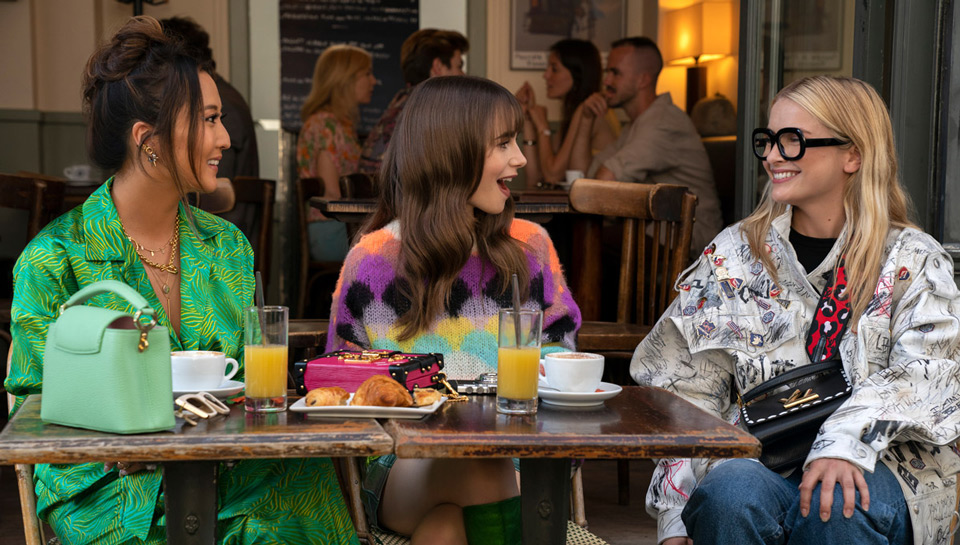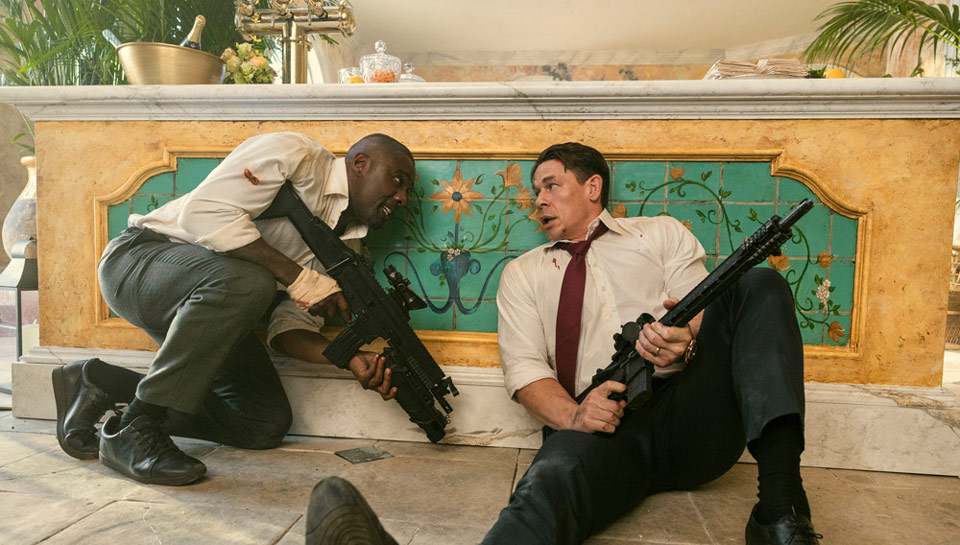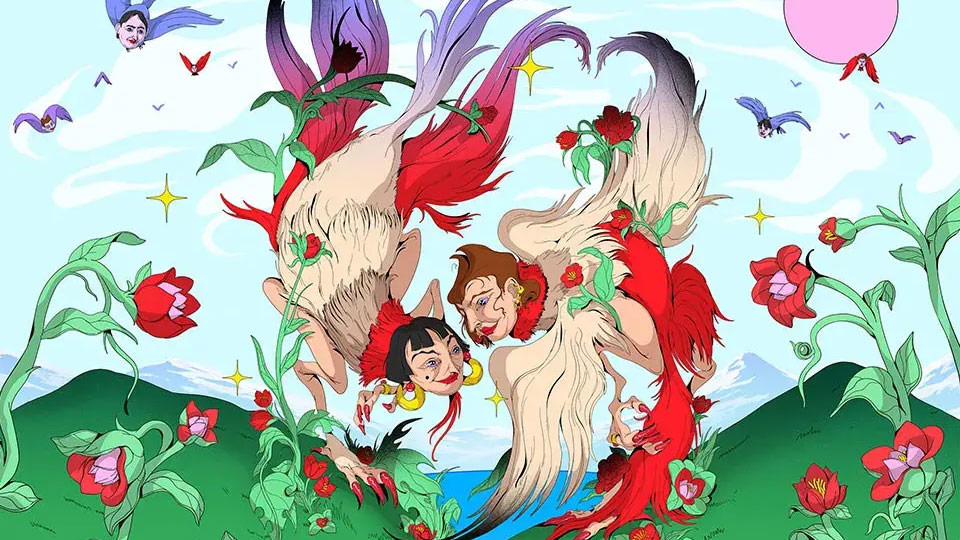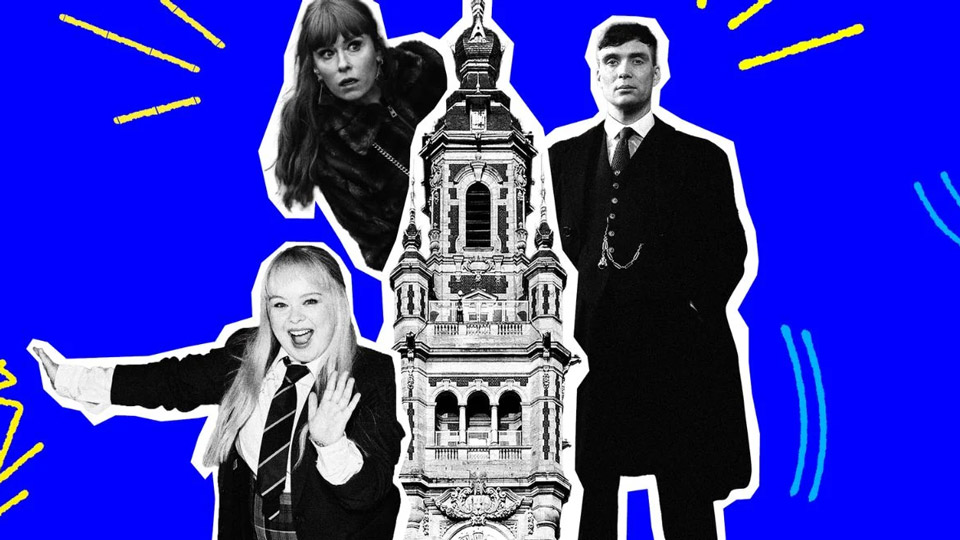How did you become a costume designer?
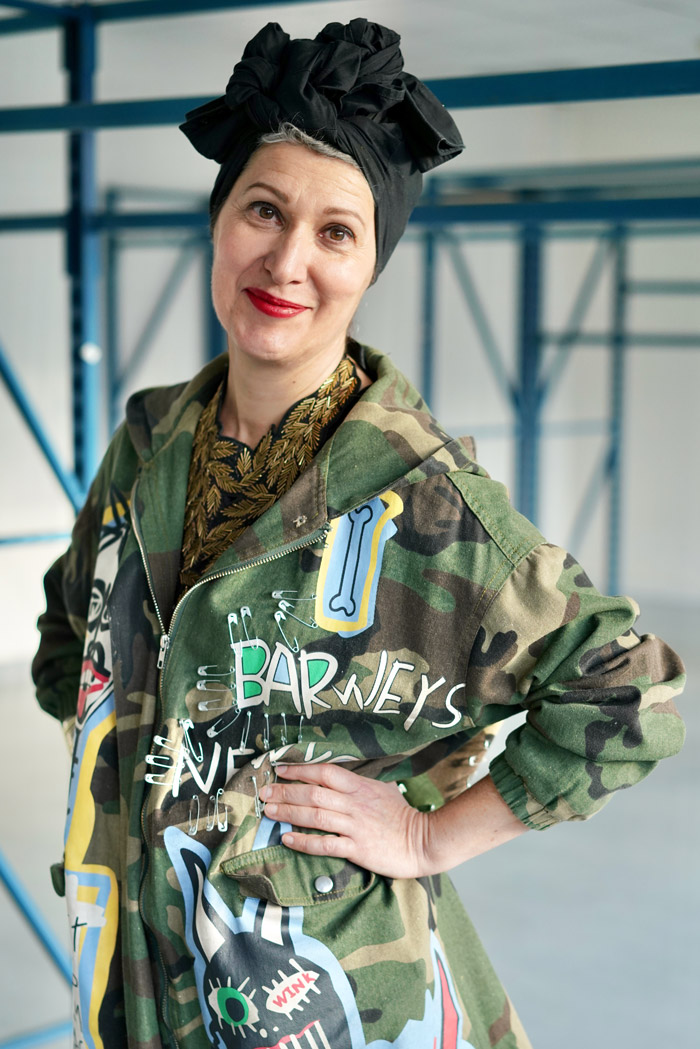
What made you want to join the Emily in Paris adventure?
The mere opportunity to work on a project that suits me. I knew that Patricia Field, Darren Star's regular costume designer – they worked together on Sex and the city –, was a consultant on the first season of Emily in Paris. We have the same artistic universe. Like Patricia, I like to work with vintage, I like what is excessive and noticeable – this is also why I have a preference for period costumes. To be part of the team, I had an audition just like the actors. This helps to reassure the director, let him know that you can get inside his head, read his desires. Darren Star knows what works and what he wants. He loves costumes, he loves fashion and what is joyful. He has a unique signature and I fully adhere to his approach.
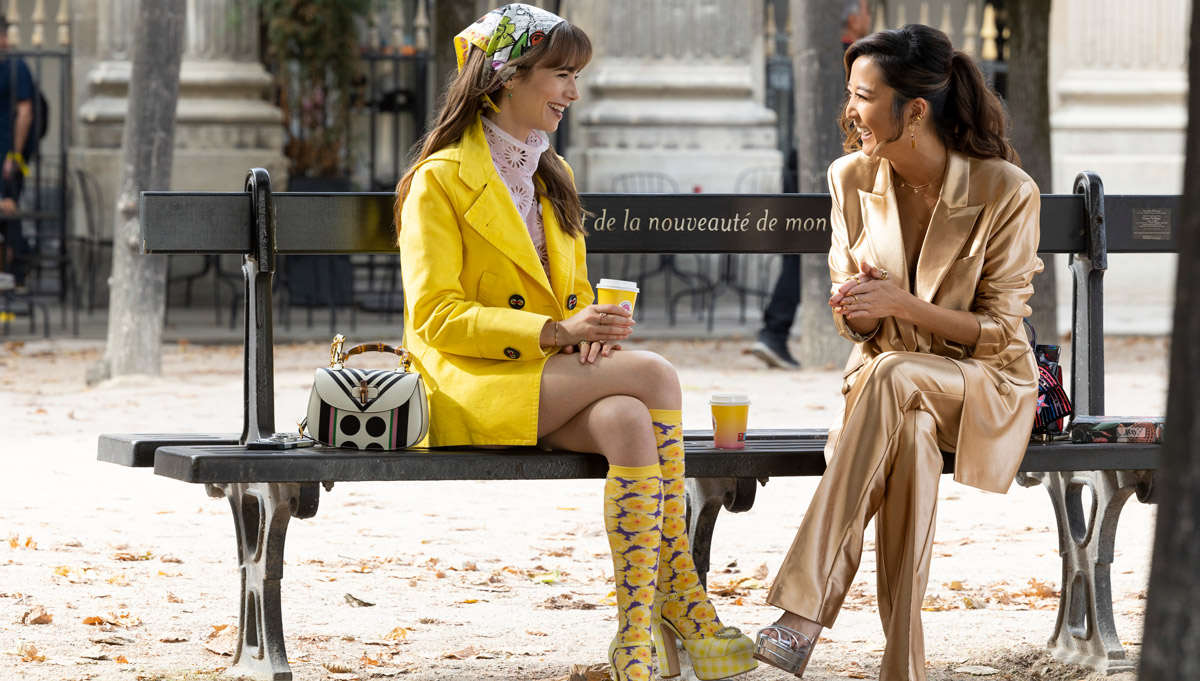
Can you tell us more about your work with Patricia Field?
We worked very smoothly together and were perfectly compatible. I knew Paris, and I brought my knowledge of the iconography of the Parisian woman. For example, for a character to embody Parisian chic, we would go without too much makeup and too tight-fitting clothes. Likewise, when I was asked to create a "trash Versailles" fashion show, I was in my element thanks to my background on period films. The series made me discover a little more the world of fashion and I should point out it differs from costume design. Fashion is aimed at clients while costumes are about building characters so they can be identified at a glance, and without extrapolating. We are not fashion designers but costume designers! We try, we dare, we combine our inventions and see if it works or not. At the beginning, we opted for a trial-and-error approach with the character of Emily. We didn't want to make her a young American in her jeans and sneakers, nor the Parisian woman’s archetype in a trench coat and white T-shirt. The only guideline we had – which actually applies to all seasons of the show – is that boring is irrelevant. Patricia taught me not to be afraid of anything, to dare combinations and not to leave anyone indifferent. And having your director’s confidence is comfortable and reassuring. It’s liberating!
Emily in Paris is distinguished by a very strong visual universe, especially when it comes to clothing. How did you work with the actors on building the characters?
We started from the principle that clothes make the man. The team was aware this series would be watched by young viewers, most likely on cell phones. The characters therefore had to be noticeable and quickly characterized to "hook" young people and prevent scrolling. That’s why each character has a well-defined style: Emily is the American eccentric, Sylvie the French chic, Gabriel the "boy next door", Camille the Parisian minimalism, Julien the colorful style… Discussions with the actors are unifying: we are always in a shared creative process. For example, Lily Collins (who plays Emily) has all of her outfits in mind since season 1. She knows when an outfit has been worn before, thus preventing us from repeating ourselves. She also knows what she is comfortable in, what her character should bring out depending on the scene, what shape or color can support her character. These skills are all the more important during the transitions between two seasons. I would select two or three outfits and together we would chose the most obvious one to make Emily’s style progress in line with what the character was going through. We take into account the evolution of the characters and make sure to shake up the codes… Speaking of which, we have gently disrupted the stereotype about French women dressing in a very close-fitting and sexy way. Conversely, Kate Walsh, who plays Emily's Texan boss, pushed the caricature to the extremes by wearing this ultra-tight Hervé Léger leopard dress that she pulled up to her thighs – which I would have never suggested for a pregnant woman character. She is one of those artists who nurture and galvanize you with their frankness. This lightness is what Emily in Paris praises through its love letter to our capital: Let's make fun of each other!
Emily's character has become a fashion reference for thousands of young people who have fun copying her looks on social networks. How do you explain this trend?
I believe the series has so much impact because it has given people a certain power: to free themselves from the diktat of fashion magazines and intransigent designers who decide what is tasteful or not. Emily in Paris rids people of their complexes! The heroine is at ease with herself, mixes fuchsia, candy pink and sequins because she likes it. She has freed herself from the dictatorship of style and that is our success: not winning unanimous support, not leaving people indifferent. In addition, the series came out during lockdown, at a worrisome time, and emerged as some sort of free agent ; a postcard of Paris that could distract people from a certain gloom. Everyone was able to identify with at least one of the characters and had fun combining clothes in implausible ways at home, mixing colors and textiles... And it works!
What are your influences on this series?
I find inspiration in the street like many, on a café’s terrace for instance, but also on Instagram and Pinterest : this allows me to create a whole visual library. I also look a lot of photo books up but few fashion magazines. Having this fondness for pre-loved clothes, which express emotions, I had fun finding vintage pieces that I mixed with pieces from young designers like Victor Weinsanto, Solène Lescouët, and luxury brands like Balmain, Dior, Chanel. I wanted to show that it was possible to twist or even embellish a vintage piece thanks to the perfect fashion accessory. Moreover, before this adventure, I already had a career including 13 years spent in Mexico where I learned to mix vintage with modern. Fashion in Mexico is quite succinct, so I developed a way of dressing on film sets made of bits and pieces. This is also how I have dressed myself since I was young. At 16, I wore my grandmother's suits and fishnet stockings. I was already overdoing it with prints because I have the fear of monochromatic textiles. And of course, the eighties also inspired me because they represent my years spent at the Palace and the Bains Douches… it shaped my taste for ugliness!
You worked with renowned French brands such as Courrège, Alexandre Vauthier, Roger Vivier, Jean-Paul Gauthier, but also small designers like Magali Pascal... Can you explain this eclectic choice?
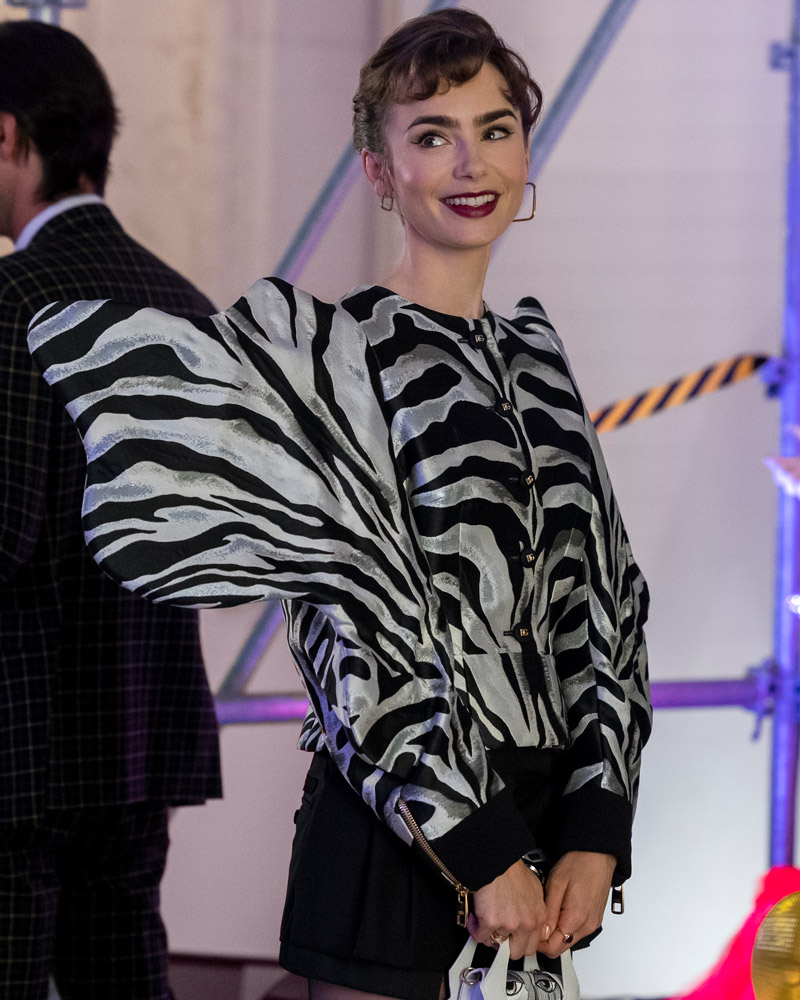
How did you imagine the evolution of the heroine's style between each season?
In the first one, everything was to be defined: the esthetics, the settings, the characters. It was exhilarating! As I explained, I was not used to this excessive style, I was afraid of overdoing it. Season 1 is all about laying the foundations, getting familiar with the series’ universe. During season 2, the actors assimilated their character, their color code, their costumes ; there is no longer any need to reassure them. A language has emerged over the episodes. In season 3, I got rid of some outrageous caricatures. Once again, each character is written, stylized, so the evolution is easier to mark. Without revealing too much, I can tell you that I had fun creating mirror effects between the characters of Emily and Sylvie (Philippine Leroy-Beaulieu), especially on one episode where there will be a little bit of the former’s style in the latter’s one, and vice versa. Their characters have similar personalities: quite radical in their way of being and thinking. It was very fun to work on this mutual influence.
When you put together outfits, secondhand clothes are particularly close to your heart. When did you start thinking about this?
I have always used secondhand clothing because I am aware that the fashion industry is one of the most polluting. Besides, we had a very small budget for season 1. We shot in the middle of August, when the brands' press offices are closed, so we didn't have a lot of outfit loans. We had to find another way to "supply" ourselves. Secondhand clothes turned out to be the perfect solution. Additionally, the casting director put us in touch with Philippe Guilet, who spent years working as a tailor for Lagerfeld, Mugler, Gaultier… and who founded the Renaissance project, focusing on sustainable development and social inclusion. A great venture that involves teaching sewing to people who, for various reasons, are unable to enter the job market. Then they use clothes that otherwise would be thrown away or destroyed to upcycle them and give them a new life. We worked together on one of Mindy's (Ashley Park) outfits, created from a disassembled Sonia Rykiel dress, and on one of Sylvie's dress made from judo kimonos and flea market salvage chains. And for season 4, I dream of recycling the costumes from season 1 by transforming them!
The shooting takes place in France in Paris, in Versailles, but also in Saint-Tropez, in Provence, in the Vaucluse, suggesting a different atmosphere, a different light... Does it influence the looks you create?
Sure! This is why my work is inextricably linked to the production designer’s. I have access to the location scouting photos in order to select the tones and nuances of the outfits. For example, a scene that takes place in a white and bright country house will impact my choices. For scenes that take place indoors, like at the Savoir agency, I sometimes need to know the color of a specific wall in front of which a character will stand in order to define the color range of the outfit.
What new challenge did you take up in season 3?
To reinvent myself, again and again. To continue to surprise, be bold… and raise some hackles! My job is to create, to provoke. Some are in tune with it, others aren’t, but at least it leaves no one indifferent!
Emily in Paris, saison 3
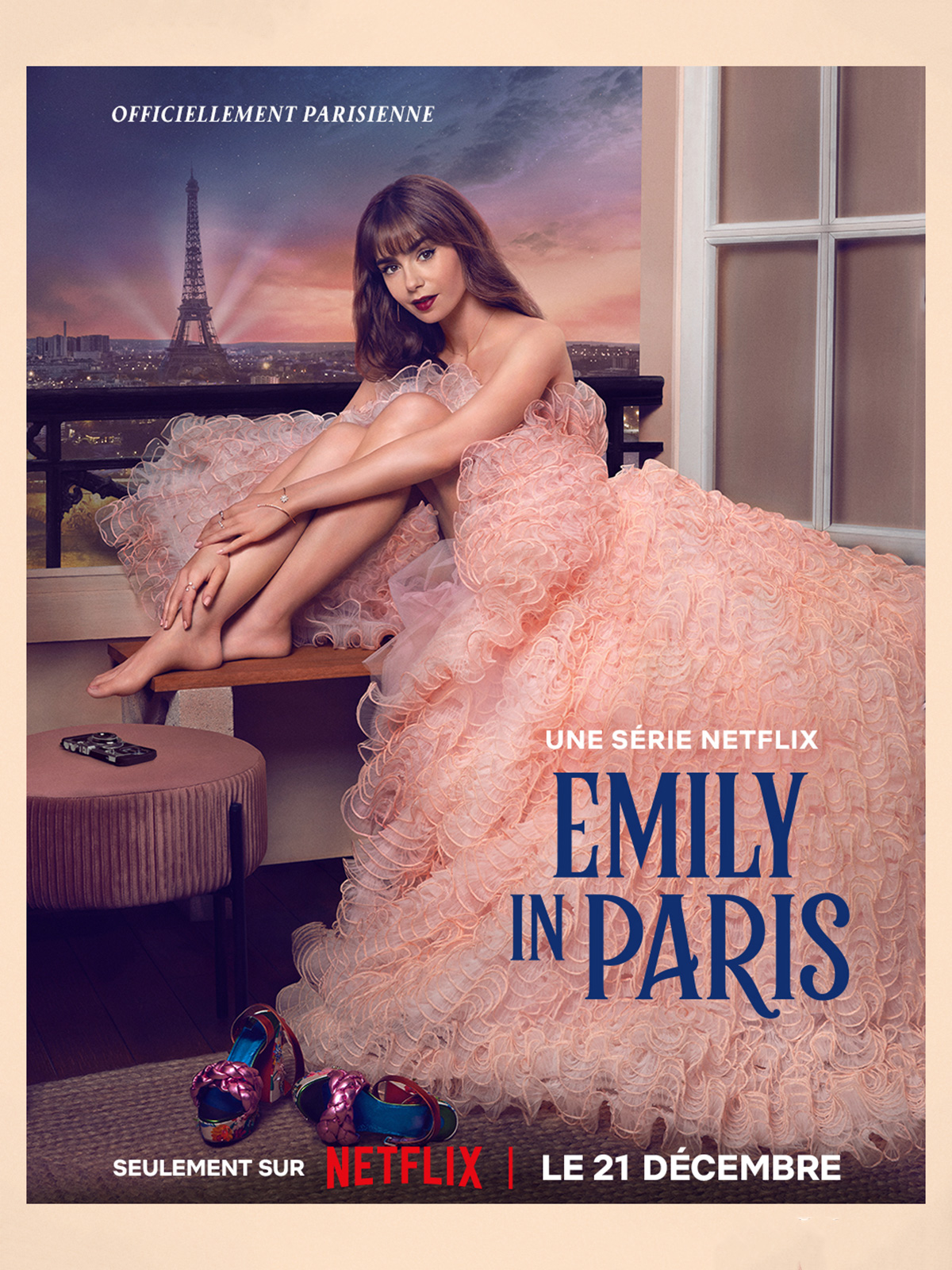
Created and Directed by Darren Star
Screenplay: Darren Star
Costume design: Marylin Fitoussi
Production: Jax Media, Darren Star Productions, Netflix, Paramount Network
With Lily Collins, Philippine Leroy-Beaulieu, Lucas Bravo, Camille Razat, Ashley Park…
Support from the CNC : Crédit d’impôt international


